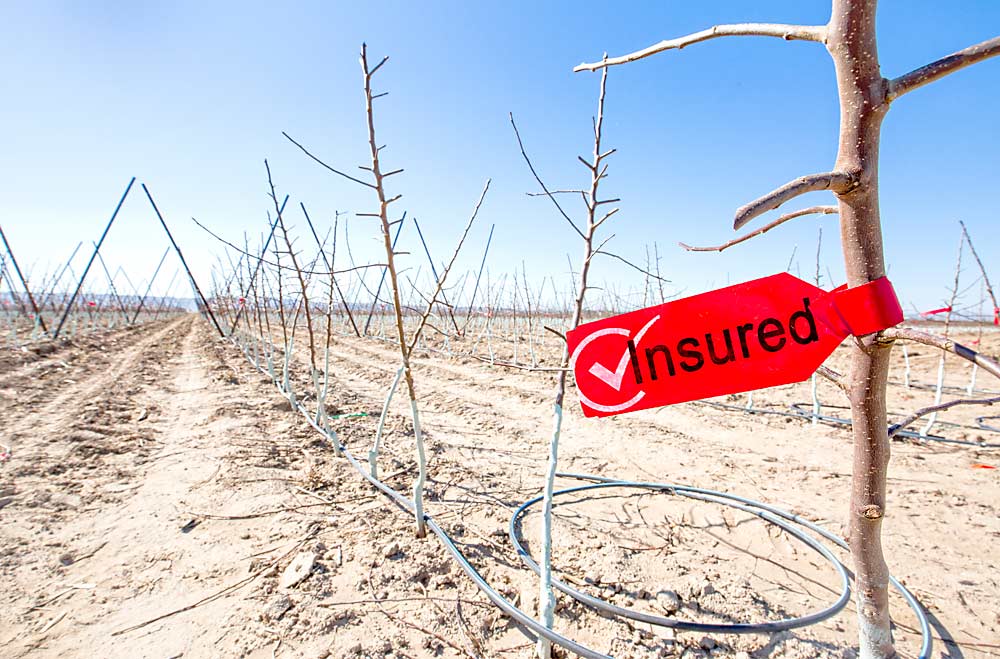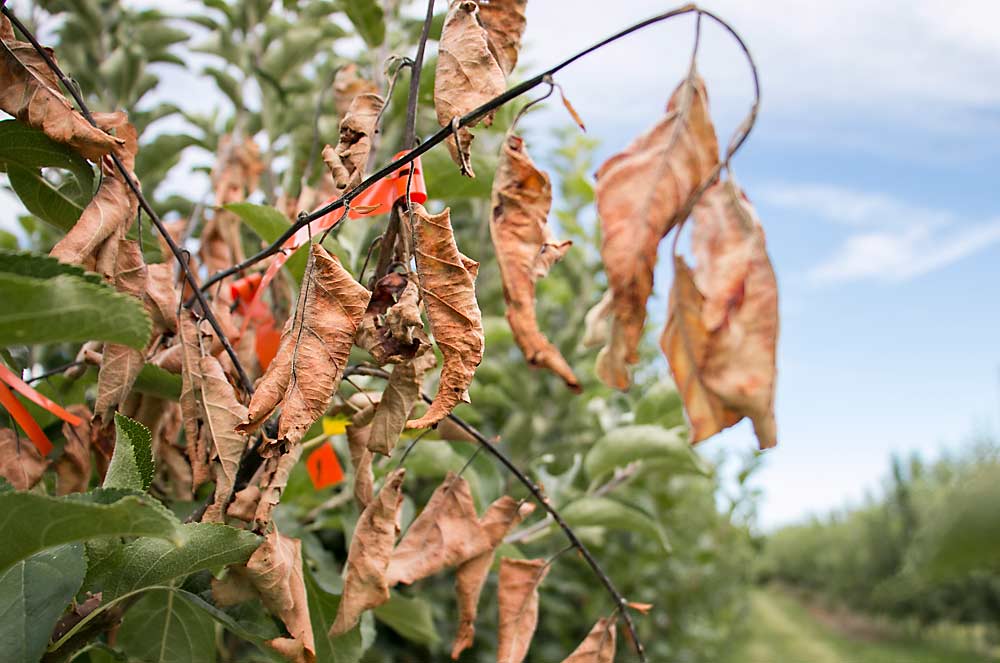
Agricultural insurance agents now sell policies that cover apple trees, independent of the crops they produce.
In January, the Federal Crop Insurance Corporation released an apple tree insurance program that covers the intense capital expenses of orchard trees. The apple industry lobbied for the new product to help protect growers against the risk of losing orchards that are so expensive to establish.
“Movement to high-density orchards and the increasing cost of trees has made the ‘tree component’ of orchard establishment approximately 25 percent of the cost of establishing or replanting orchards, which can require the investment of $40,000 or more per acre,” said Mark Seetin of the U.S. Apple Association, the Falls Church, Virginia-based industry association.
The tree policy itself is only available in six states so far.
USApple and growers have been working on the new insurance program since 2015. The product came out largely as expected, Seetin said.
On a per-tree basis, the program protects against losses from the usual disasters that would normally cover crops: freeze, wind, hail, volcanic eruption, fire, insects, disease and failure of irrigation if that failure is caused by an “unavoidable, naturally occurring event,” according to the provisions.
Growers had requested a way to protect against fire blight, so this plan offers a fire blight endorsement — required in Michigan, Pennsylvania and New York, but optional in Washington, Oregon and Idaho. Trees are eligible for fire blight coverage if they do not have visible signs of infection during a pre-acceptance inspection.
If fire blight subsequently infects the tree or orchard, a grower may be able to claim an indemnity, assuming recommended fire blight prevention and control practices have been followed, said Nicole Gueck, senior policy analyst for AgriLogic Consulting, the College Station, Texas, company that developed the program.
Under the policy provisions, a tree is considered destroyed if cankers are present in the trunk or central leader in trees 1 to 6 years old. The same goes for older trees as long as the canker is at a height above the bud union equal to 25 percent of the height of a tree.
The program also offers growers a new optional feature to receive more frequent indemnities on smaller claims for additional premiums, meaning growers “don’t have to wait for as big of a catastrophe,” Gueck said.
AgriLogic regularly leads research and development for the USDA Risk Management Agency on behalf of grower organizations.
Growers can elect different coverage levels based on types, an insurance term for groups of varieties, levels of tree maturity and management practices.
The tree insurance program is not related to apple crop insurance; growers may carry one or the other, both or neither as they choose, Gueck said.
This policy is for apples only, though other agricultural trees have programs, too. The Risk Management Agency administers tree insurance for citrus, pecan and macadamia trees. Gueck has heard some interest from grape growers, but neither she nor Seetin knew of cherry or pear representatives lobbying for tree insurance programs.
Who’s interested?
Growers in Washington have expressed interest in the new program, said Nick Cox, an agent with Conover Insurance who works in the Tri-Cities area and the Yakima Valley. However, affordability will be their first question; it always is.
Cox and other agents spent several weeks this winter learning about the new product and informing their clients before the Risk Management Agency had posted costs, which vary by county, level of coverage and a host of other factors. With traditional crop insurance, depending on the crop and risk threshold of each grower, his growers typically stick to the 65-percent and 70-percent coverage “wheelhouse” to balance their own costs, government subsidies and risk, he said. They will most likely do the same for tree insurance.

“If it’s too expensive, I think growers are going to stick to CAT,” industry jargon for catastrophic insurance for crops, Cox said.
Cox suggested growers ask specifically about the other options besides fire blight in the new tree insurance program. One, called occurrence loss options, would let growers pay higher premiums in exchange for a lower loss threshold. Apple crop insurance, by way of comparison, tops out at 75 percent, meaning growers would have to lose 25 percent of their crop to receive any payments on the base policy. The odds of a fire, for example, destroying 25 percent of the trees in an orchard are slim, but growers can purchase an endorsement that would let them receive compensation at a loss as low as 5 percent.
Another option is the comprehensive tree value endorsement, which would let growers receive payments for lost production from destroyed and fully damaged trees during the years the replacement trees grow to maturity.
Growers should consult with their crop insurance agents for specific recommendations on whether they might want to insure their trees.
Cox and some of his fellow agents hope the Risk Management Agency creates a similar tree product for ever-risky cherries in the future.
“We all agree that cherry growers would be fascinated with this product,” he said. •
—by Ross Courtney
Related:
—Insurance beyond apples






Leave A Comment